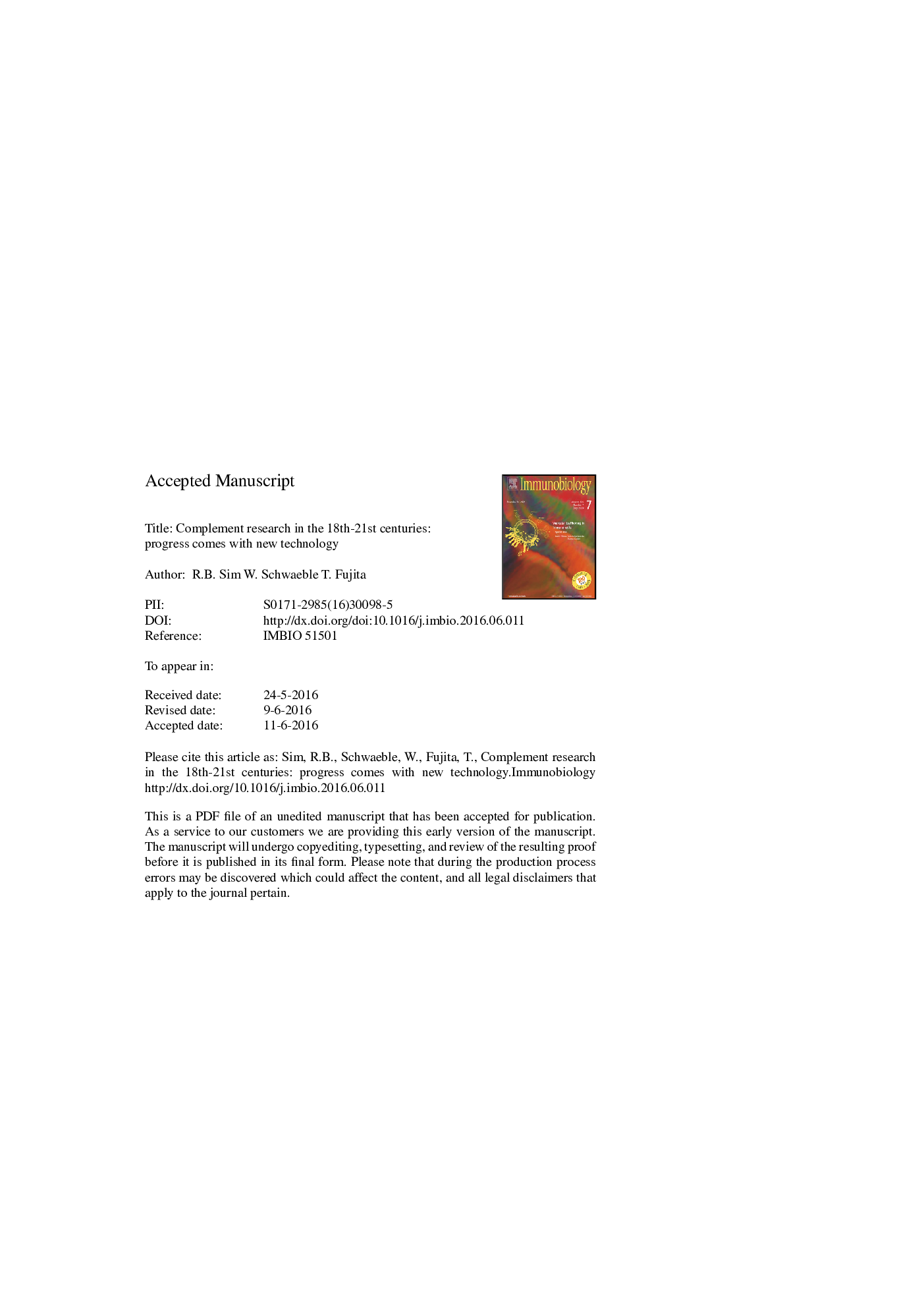| Article ID | Journal | Published Year | Pages | File Type |
|---|---|---|---|---|
| 10940665 | Immunobiology | 2016 | 36 Pages |
Abstract
The complement system has been studied for about 120 years. Progress in defining this large and complex system has been dependent on the research technologies available, but since the introduction of protein chromatography, electrophoresis, and antibody-based assay methods in the 1950s and 60s, and sequencing of proteins and DNA in the 70s and 80s, there has been very rapid accumulation of data. With more recent improvements in 3D structure determination (nmr and X-ray crystallography), the structures of most of the complement proteins have now been solved. Complement research since 1990 has been greatly stimulated by the discoveries of the multiple proteins in the lectin pathway, the strong association of Factor H, C3, Factor B allelic variants with adult macular degeneration and atypical haemolytic uremic syndrome, and the introduction of the anti-C5 monoclonal antibody as a therapy for paroxysmal nocturnal hemoglobinuria and atypical haemolytic uremic syndrome. Potential new roles for complement in tissue development and the search for novel therapeutics suggest a very active future for complement research.
Related Topics
Life Sciences
Biochemistry, Genetics and Molecular Biology
Cell Biology
Authors
R.B. Sim, W. Schwaeble, T. Fujita,
